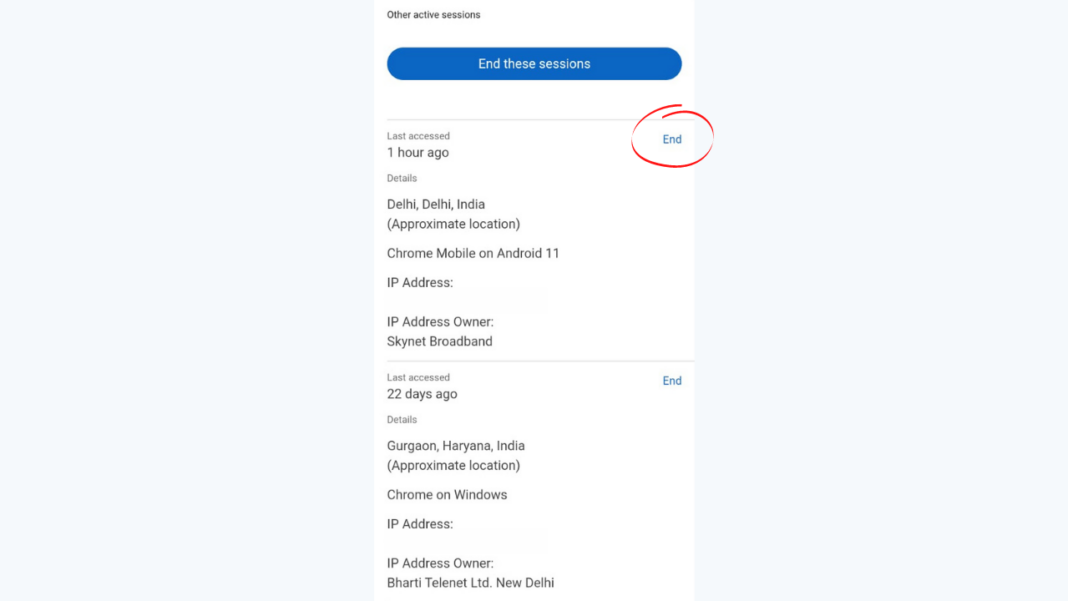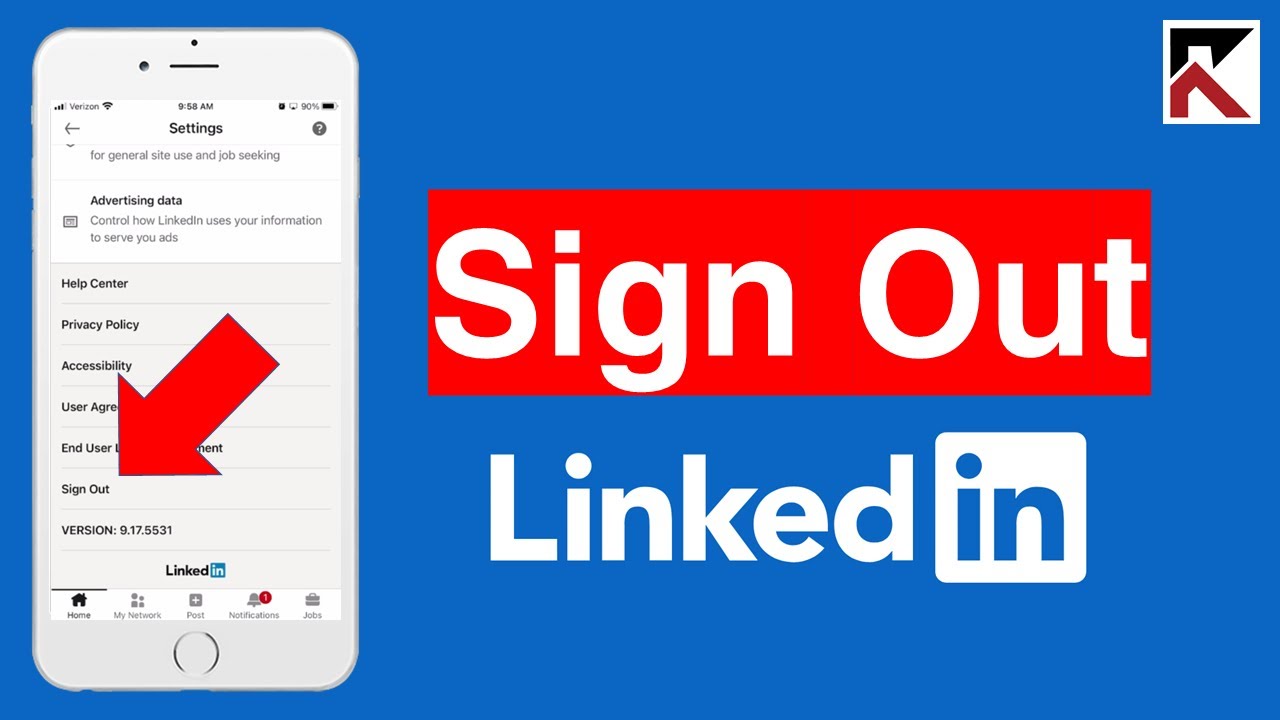Logging out of LinkedIn is an essential step in maintaining your online privacy and security. Whether you’re using a public computer or just want to ensure your account stays secure, this quick guide will walk you through the process of logging out effectively. Plus, we'll explore why it's important to log out regularly, especially in today’s digital world.
Why Logging Out of LinkedIn is Important

In our interconnected world, managing your digital footprint is crucial. Here are several reasons why logging out of LinkedIn should be a regular practice:
- Protect Your Privacy: Leaving your account logged in on shared or public devices can lead to unauthorized access to your personal information. Anyone can view your profile, messages, and connections.
- Prevent Unauthorized Use: If you forget to log out, someone could send connection requests or messages on your behalf, which might damage your professional reputation.
- Secure Your Data: LinkedIn holds significant data about your professional life. Logging out ensures that your personal details, such as your work history and contact information, are safe from prying eyes.
- It’s a Good Habit: Regularly logging out can help establish good security practices. Think of it as locking your door every time you leave your house.
- Access Control: Logging out allows you to manage who has access to your account effectively. If you’re using a friend’s device, for instance, logging out ensures that your information remains yours alone.
In essence, logging out of LinkedIn is not just a matter of convenience; it's a proactive measure to safeguard your online presence. With the rise of cyber threats and data breaches, taking simple steps to enhance your security can make a significant difference.
Also Read This: How to Determine if Jobs on LinkedIn Are Legitimate: A Quick Guide
3. Step-by-Step Guide to Log Out of LinkedIn

Logging out of LinkedIn is a straightforward process, but it’s essential for keeping your account secure, especially if you’re using a shared or public computer. Follow these simple steps to ensure you log out safely:
- Open LinkedIn: Start by visiting the LinkedIn website or launching the LinkedIn app on your device.
- Locate Your Profile Icon: On the top right corner of the LinkedIn homepage, you’ll see your profile picture or initials. Click on it!
- Find the Sign-Out Option: A dropdown menu will appear. Scroll down until you see the Sign Out option.
- Click Sign Out: Click on Sign Out, and voilà! You’ve successfully logged out of LinkedIn.
And that’s all there is to it! If you’re using the app, the steps are quite similar:
- Open the LinkedIn App: Tap to open the app on your mobile device.
- Tap Your Profile Picture: This will be located in the upper left corner of your screen.
- Select Settings: From the menu, choose Settings.
- Log Out: Scroll down and tap on Log Out at the bottom of the settings menu.
Logging out regularly is a good habit, especially if you access LinkedIn from multiple devices. This way, you can help protect your account from unauthorized access!
Also Read This: How to Post a Job on LinkedIn: A Complete Walkthrough
4. Managing Your LinkedIn Account After Logging Out

Now that you’ve logged out, you might be wondering how to manage your LinkedIn account effectively. Here are some tips to keep your account organized and secure:
- Change Your Password: If it’s been a while since you last updated your password, now’s a great time! Make sure it’s strong and unique. Consider using a mix of letters, numbers, and special characters.
- Enable Two-Step Verification: Adding this layer of security is simple. Go to your account settings and enable two-step verification for added protection against unauthorized access.
Once you’re logged back in, take some time to:
- Review Privacy Settings: Make sure your profile visibility is set to your preferences. You can decide who sees your connections, posts, and updates.
- Update Your Profile: Keep your profile fresh! Add any new skills, experiences, or endorsements that showcase your professional journey.
- Engage with Your Network: Like, comment, or share posts from your connections. This not only keeps you active but also helps build stronger professional relationships.
In summary, logging out of LinkedIn is quick and easy, and managing your account afterward ensures your information remains safe and up to date. Happy networking!
Also Read This: How to Find Resumes on LinkedIn: Searching for Resumes and Profiles on LinkedIn
5. Tips for Account Security on LinkedIn

When it comes to protecting your professional identity online, LinkedIn security should be top of mind. After all, your profile is not just a resume; it’s a representation of your professional brand. Here are some practical tips to keep your account secure:
- Enable Two-Step Verification: This adds an extra layer of security. Each time you log in from a new device, you'll receive a verification code via text or email. It’s like having a bouncer at your digital door!
- Use a Strong Password: Your password should be unique, mixing letters, numbers, and special characters. Avoid using easily guessable info like birthdays or pet names. Consider a password manager to keep track of it all!
- Regularly Update Your Password: Change your password every few months. This practice helps mitigate risks, especially if there’s a data breach elsewhere.
- Be Cautious with Connection Requests: Only accept requests from people you know or have a legitimate connection with. Scammers often use fake profiles to gain access to your information.
- Review Account Activity: Keep an eye on your account’s activity log. If you see any suspicious logins or changes you didn’t make, change your password immediately!
- Limit Profile Visibility: Adjust your privacy settings to control who sees your information. You can choose to make your profile visible only to connections or specific groups.
Implementing these tips can significantly enhance your LinkedIn account's security and help you maintain your professional integrity online. Remember, a few simple steps can go a long way in protecting yourself from potential threats!
6. Conclusion
Logging out of LinkedIn and managing your account effectively doesn’t have to be a chore. With the right knowledge and practices, you can navigate your LinkedIn experience smoothly and securely. Always remember to log out when using public computers and keep your account settings updated to reflect your preferences.
By following the tips we’ve explored for enhancing your account security, you can safeguard your personal information and ensure your LinkedIn presence remains professional and polished. So whether you’re logging in to network, job hunt, or simply share insights, take a moment to ensure your account is secure!
Embrace the power of LinkedIn while being mindful of your online safety. Happy networking!
 admin
admin








